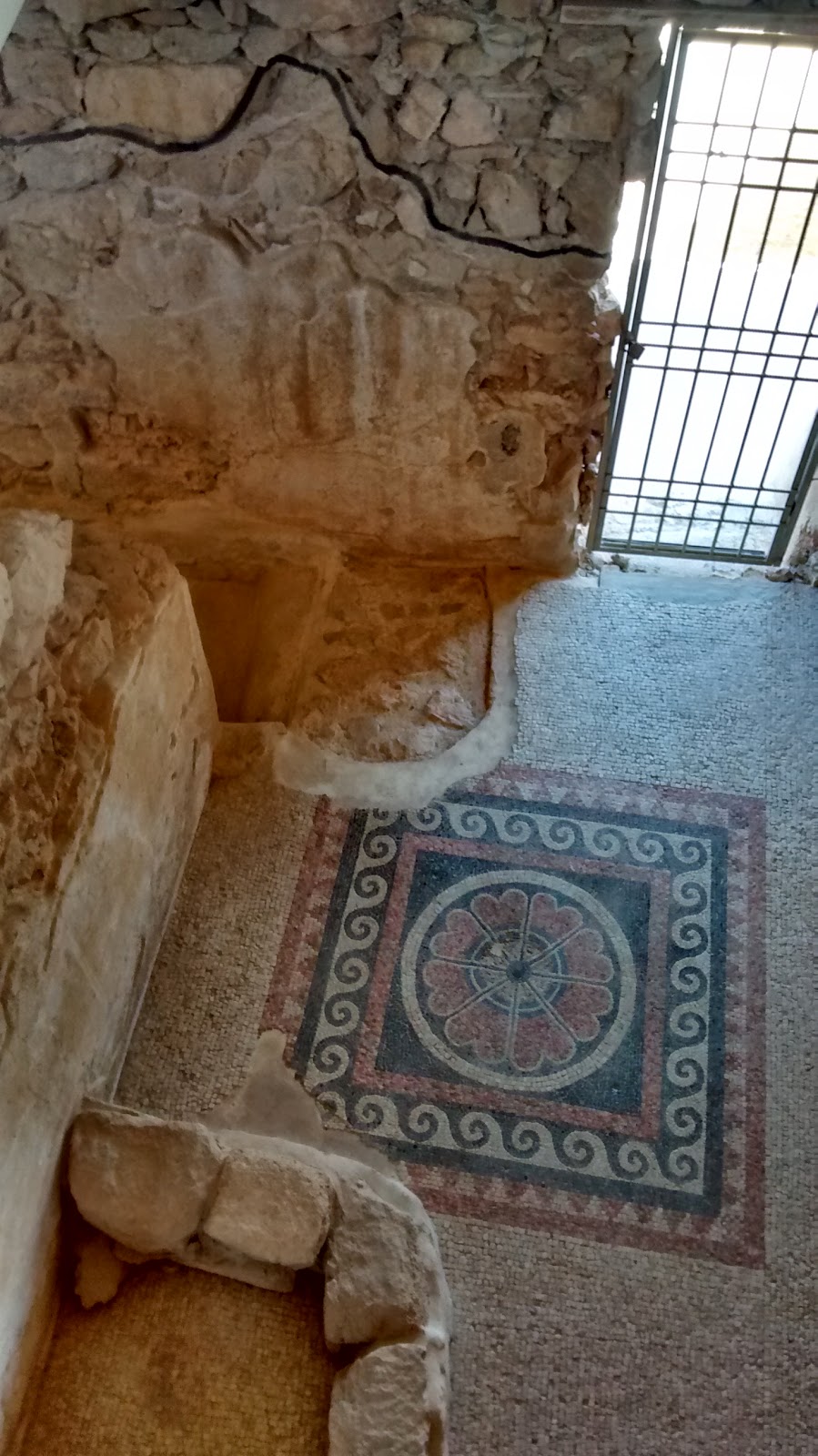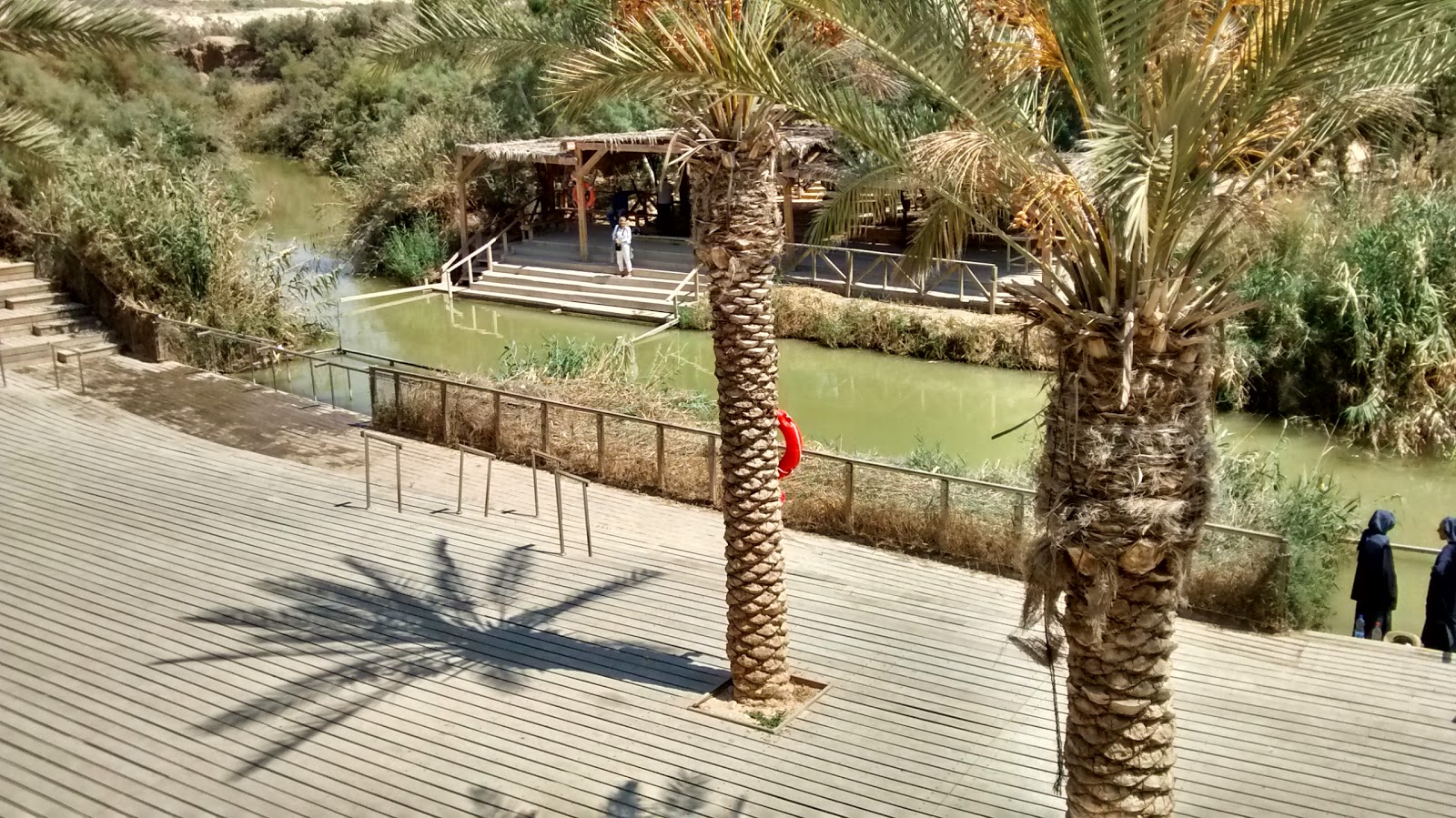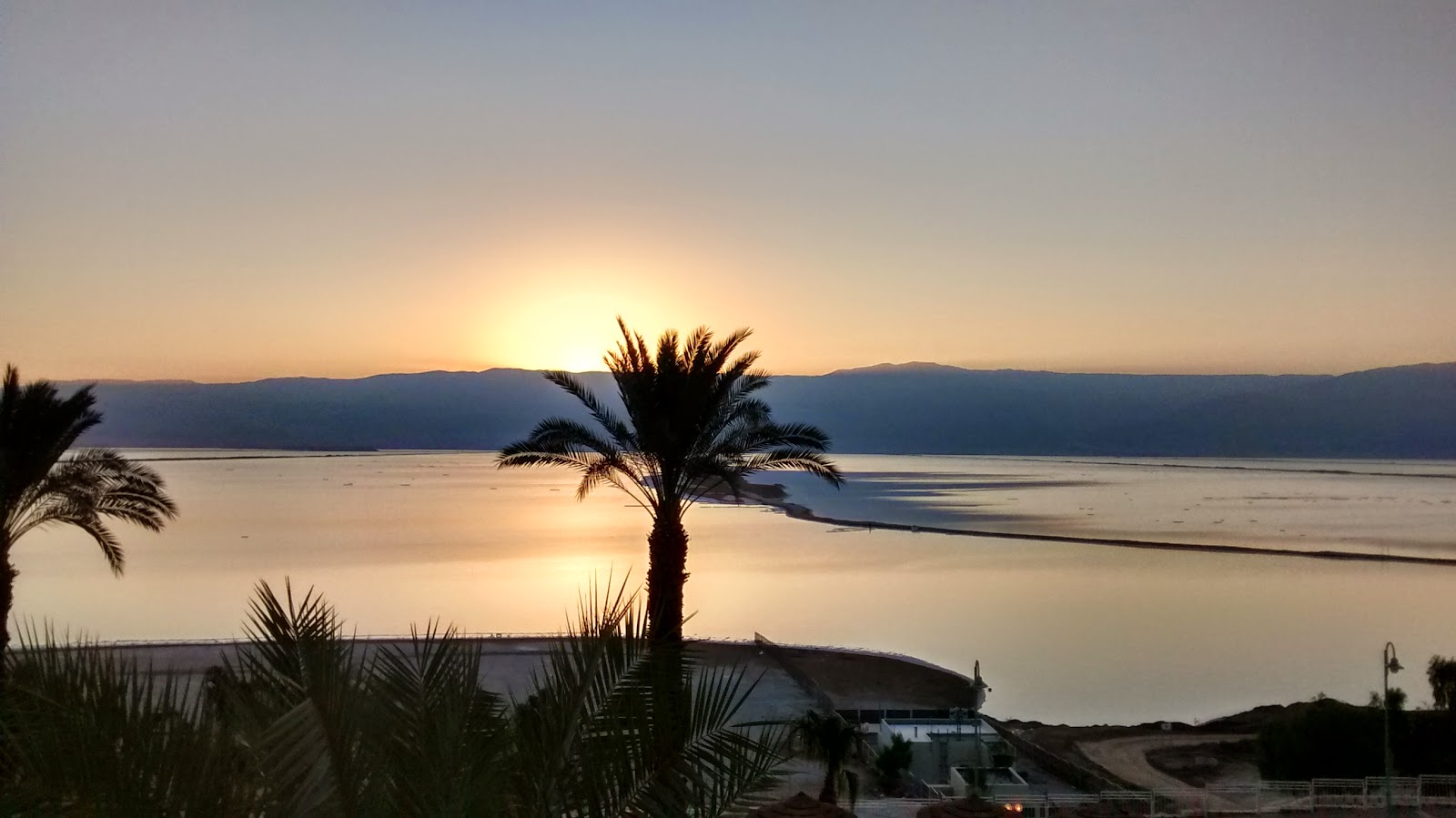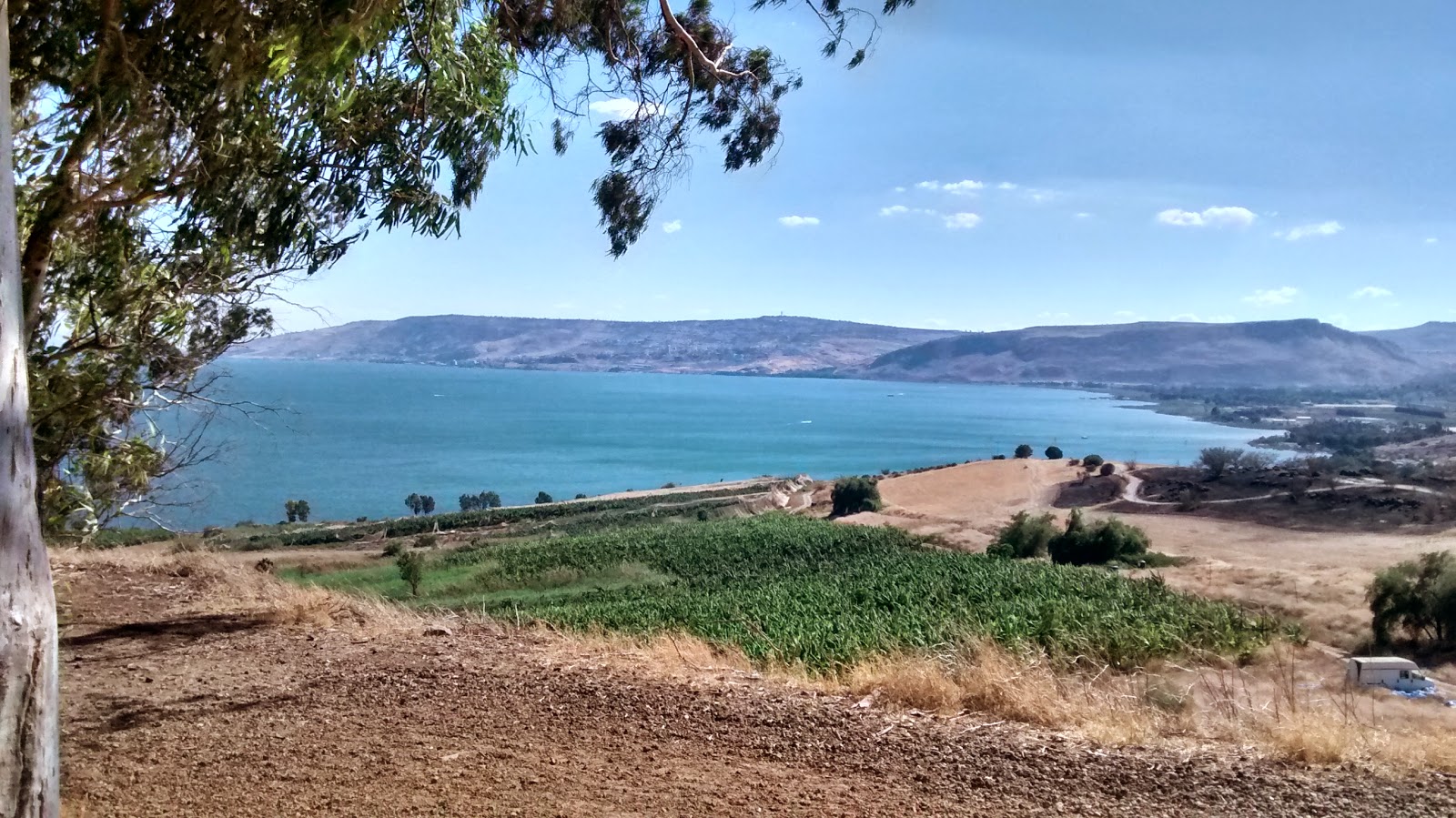 |
| Masada |
We started today at King Herod's fortress of
Masada. Our tour guide began with the story of Herod bringing his wife Miriam and her mother to Masada. Then, the King went to Rome. Parthians (from Persia) sieged Masada while Herod was away. When the King returned, he saved the city. Then, he made cisterns and storerooms to last a siege for seven years. King Herod didn't live forever. And, after his passing, a group of Israelis revolting against Roman rule moved into the fortress. Rome laid siege to Masada. Just as the Romans were about the enter, the Israelis decided to commit mass suicide instead of submit to Roman rule.
 |
| Floor mosaic inside Masada |
It's a gripping history and archaeological site that was only excavated in the 1960s. Our guide recommended reading the lead archaeologist Yigael Yadin's book "
Masada" to learn more about the history and excavations. Today, the site is still an active archaeological dig. The parts that have been excavated are neatly signed in English; and, there are many places to sit in the shade around the site. There are still a few murals preserved on walls. And, there are baths in the Roman style. In the ruins of the old synagogue, we entered the
genizah, the place where old Torahs and other religious books are stored. Inside, a rabbi was copying the Torah by hand.
 |
| Ein Gedi spring |
Our next stop was
Ein Gedi. This area is mentioned in the Bible, most famously as the place where David hides from a homicidal Saul (1 Samuel 24:1-2). It's a rocky area that is now a
National Park. Inside, we saw a small rodent like animal called a
hyrax. Think possum ornery but cuter looking. We walked in to see the Ein Gedi spring flowing down the rocks. On our way back out to the bus, we saw
ibex in the parking lot.
 |
| Looking up at the caves where the Dead Sea Scrolls were found |
Our final destination today was
Qumran. Around 100 BC, a sect of Jews thought that the current priests/rabbis were too liberal. Therefore, they moved to Qumran to live a holier life apart. As devout Jews, they spent time copying the scriptures. But, no one thought any of those ancient scrolls were still around until the 1940s, when Bedouins found scrolls in pottery jars in a cave near Qumran. So far the caves around Qumran have contained pieces of every book of the Old Testament (or Hebrew Bible) except Esther! (To see digital captured images of the scrolls, click
here.) These are the famous
Dead Sea Scrolls.















